How Big Should My Down Payment Be?
< Back to Articles | Time to Read: 5 minutes
Housing affordability remains to be a hot topic as more as more new home buyers enter the market looking for a potential home to purchase. Since 2014, home sales to first-time home buyers have accounted for most of the real estate growth. And as time goes on, there seems to be an overall lack of understanding about the minimum down payment amounts among would-be homeowners and more specifically, renters.
A recent study by Fannie Mae showed that nearly one-third of respondents believed a home purchase required more than 20% down. And 70% of those who were planning on buying a home in the next 3 years said a 20% down payment would cause a delay in purchasing.
Depending on the house you’re interested in purchasing, it’s important to keep in mind the housing market. As you’re saving for your down payment, rates may rise and housing prices could change.
Saving 20% for a down payment has long been a rule of thumb. By doing this, your monthly payments are more affordable, and you can avoid paying Private Mortgage Insurance (PMI) on most home loan programs. And to be clear, a higher down payment is always a positive thing. The problem is it might not be a realistic thing.
It’s important to remember that you shouldn’t shy away from a mortgage because you’re uninformed—you still have opportunities if 20% down is not an option. You certainly don’t want to completely wipe out your savings!
Options available:
- Conventional Home Loans -These loans usually require a down payment of at least 5%, although there are several available home loans that allows you to make a down payment of just 3%, but keep in mind interest rates will likely be higher for that option.
- FHA Home Loans - These loans are very popular and usually require a down payment of at least 3.5% with a credit score of at least 580 to qualify.
- VA Home Loans- If you’ve served in the military (or are currently serving) this loan could be a good choice for you. Pricing is competitive and you have the option to wrap the down payment into the loan principal.
- No Score Home Loans- If you’re in the process of lowering your credit score by paying off debt, or even have a credit score of zero, you have the perk of having access to manual underwriting at Churchill and work toward the dream of debt-free homeownership.
How much house can I afford?
It’s always good to get a baseline number before you start shopping for a home. You can use a quick and easy mortgage calculator to get a head start. To find your real number, we recommend becoming a Churchill Certified Home Buyer.
As a Certified Home Buyer, you can shop smarter for your home by becoming pre-underwritten for your home loan before you even go under contract. It’s the next best thing to paying cash for your home and helps set you for home buying success to increase your negotiating power with a quick close.
Down Payment Assistance (DPA) programs
There are about 2,500 Down Payment Assistance programs available across the country to qualified home buyers. These programs vary from state to state and typically have criteria related to specific loans such as VA, FHA, and USDA. Be sure you know the full spectrum of the DPA you’re considering.
As part of your home shopping process, it’s important to research DPA programs. Your Home Loan Specialist is always available to discuss your options to see if a specific program is a good fit for your situation and your long-term financial goals.
In Summary
No matter how you look at it, rates remain low. So, if you’re looking to purchase, now may be the perfect time for you. If you have questions about rates or a down payment, reach out to a Home Loan Specialist licensed in your state.





